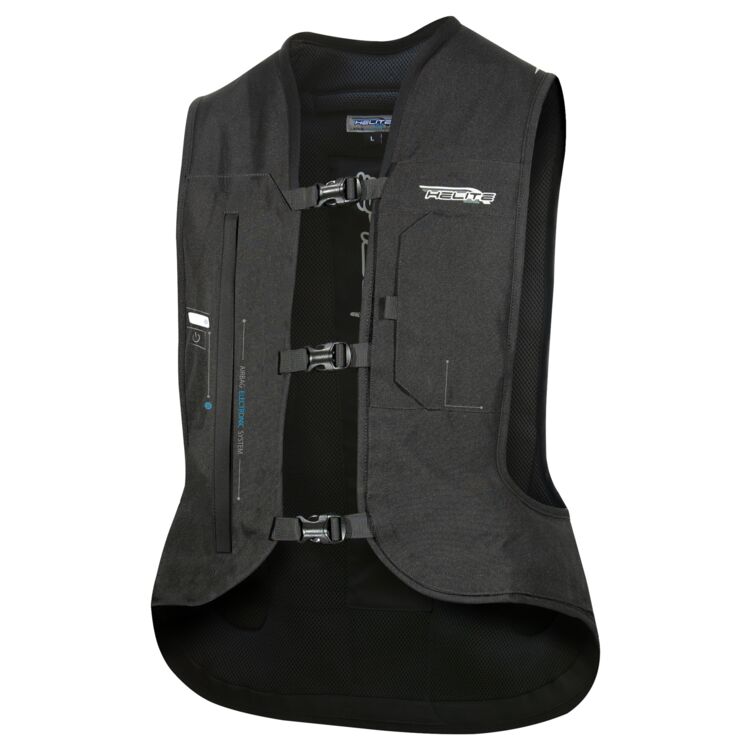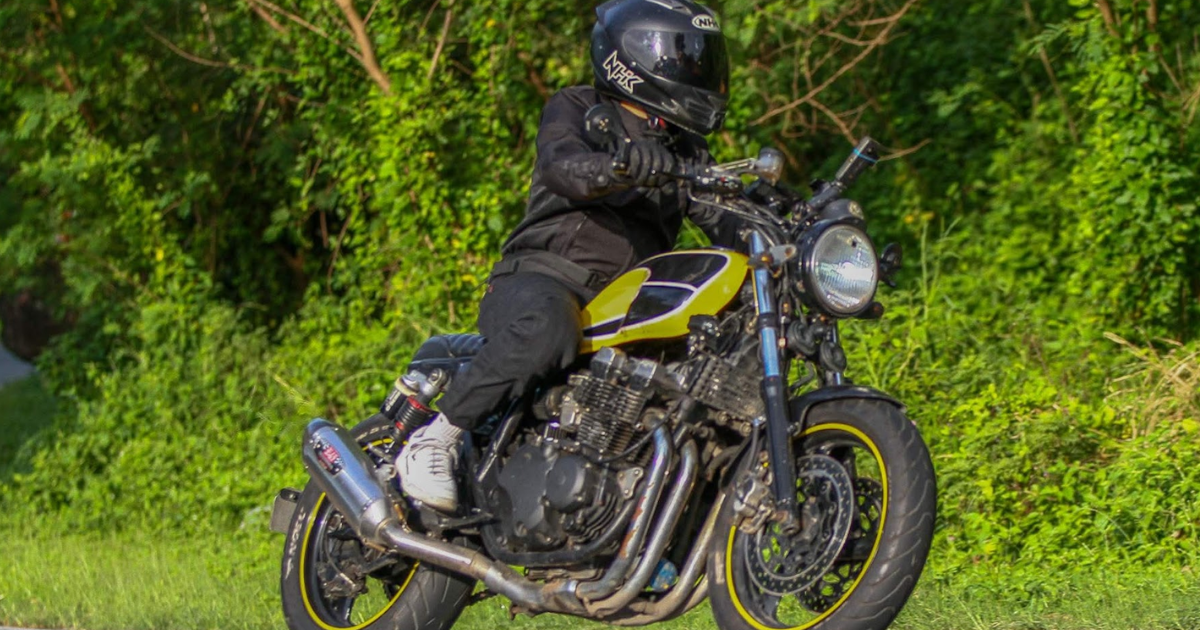
Helite E-Turtle Electronic Airbag Vest Review
left for contents
What’s up my biker friends, and welcome back. Today I’m going to talk to you about the new Helite E-Turtle Electronic Airbag Vest. If you’ve been following my channel, you’ll know I picked up the Helite Turtle 2.0 mechanical airbag vest about a year ago. It’s been my go-to since then.
This article is based on the video by MotoVibes.
But now, I’ve upgraded to the electronic version, and I’m going to walk you through the unboxing, the differences, why I chose it versus other airbags, and whether this is the right airbag vest for you.
Wireless airbag vest offering fast 360° detection and 80 ms inflation to protect neck, back, pelvis, and chest—worn over gear for comfort and user-serviceable CO₂ cartridge.
- Fits comfortably over any motorcycle jacket
- Rapid inflation covers vital organs & neck
- CO₂ cartridge is user-replaceable
- Good ventilation even in warm weather
- Not EN1621‑4 certified—mid-tier protection
- Over‑jacket fit may look bulky for some users
Unboxing the Helite E-Turtle
When I received the package, there wasn’t much in the box—just the vest itself, the optional fork sensor, and an extra CO2 cartridge I bought separately. That extra cartridge is so I can quickly reset the vest if it ever inflates; it only takes about ten minutes to swap in a new one and be back on the road.
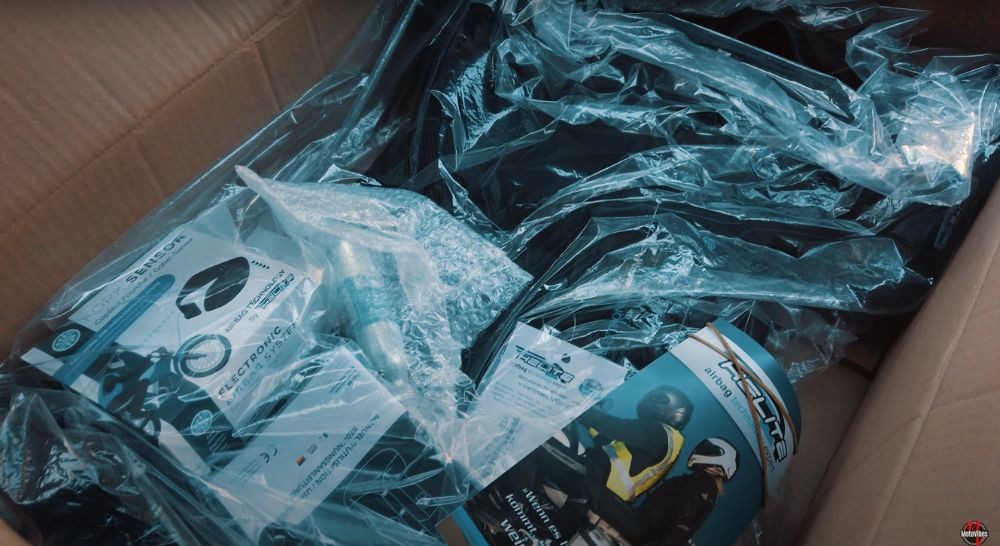
Comparing Old and New: Mechanical vs. Electronic
I hung the mechanical Turtle 2.0 and the new electronic Turtle side by side. Both are size large, and at first glance, they’re very similar. The key differences are all tucked underneath the flap.
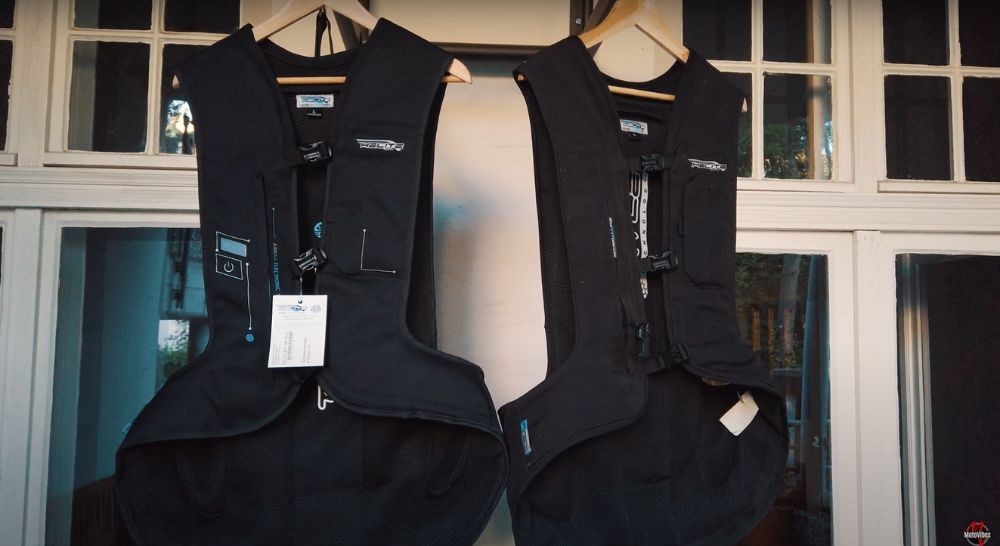
In the mechanical version, there’s a tether that physically pulls out a pin when you crash, releasing CO2 from the cartridge into the vest. In the electronic version, that action is triggered by a control unit. The new vest contains an electronic firing mechanism, a battery, a GPS, and a gyroscopic sensor—all working together to detect a crash and deploy the airbag.

What’s the Deal with the Fork Sensor?
The fork sensor is an optional add-on, but I got it. It mounts to the front fork of your motorcycle and pairs with the vest to act as a second crash sensor. According to Helite, this is especially helpful at speeds under 20 km/h, where low-speed impacts might not trigger the main sensor fast enough. The fork sensor shortens the response time in these scenarios.
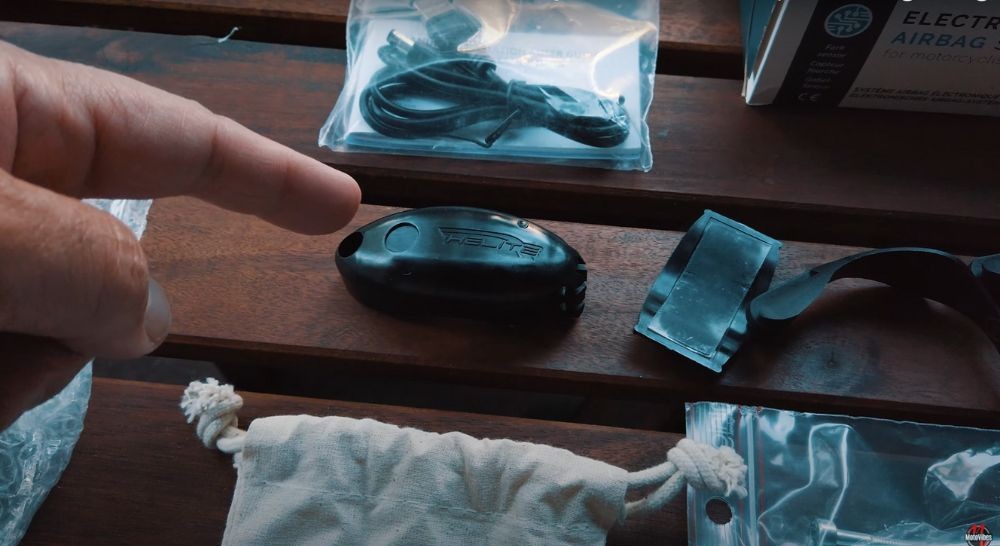
The vest can still function perfectly fine without it, especially at speeds above 20 km/h, but having both sensors definitely gives you that added peace of mind.
Price and Package
So, the full package I got came in at under €800, which I think is pretty good for what you’re getting. That includes the vest, the fork sensor, and one CO2 cartridge. I already did a video about the mechanical version and why I went with this specific design—so let’s now talk about what makes this new version such a solid upgrade.
Why I Chose an Over-the-Jacket Vest
A lot of the electronic vests on the market are meant to be worn under your jacket. That sounds fine, but there are some downsides. For one, under-jacket vests are limited in air volume—there’s only so much space they can inflate into. Plus, it might not even fit under a tight-fitting riding jacket unless you bought it oversized.
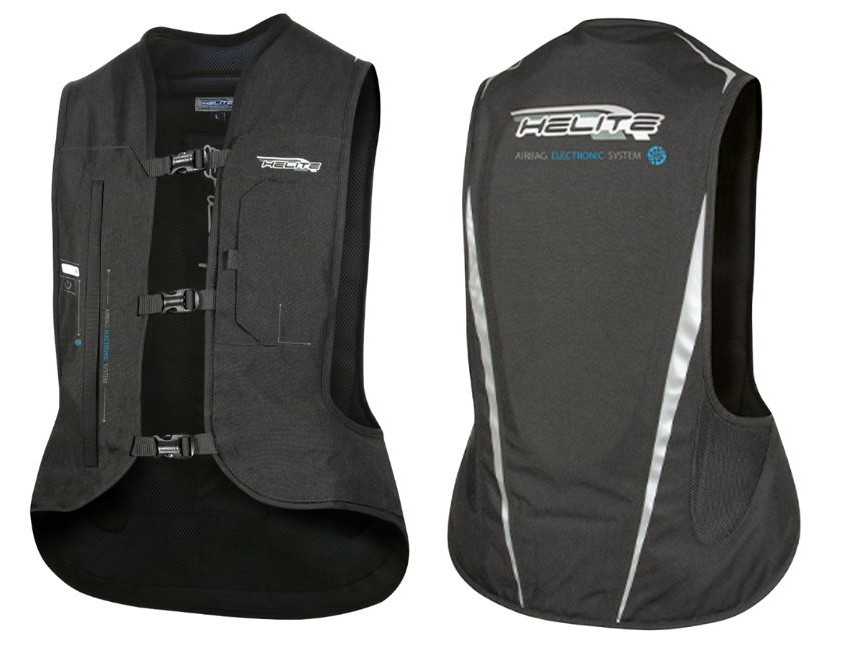
The Helite E-Turtle, on the other hand, is worn over your jacket. That means more air volume, and more coverage when the vest inflates. And crucially for me—it includes something like an air neck brace.
The Air Neck Brace: My Favorite Feature
The neck brace feature is one of the most important to me. The vest has air cushions that inflate under your helmet in a crash, holding your head and spine straight. I’ve personally crashed in a vest like this, and I can vouch for how well it works. That stability in your neck and spine during a fall can make a huge difference.
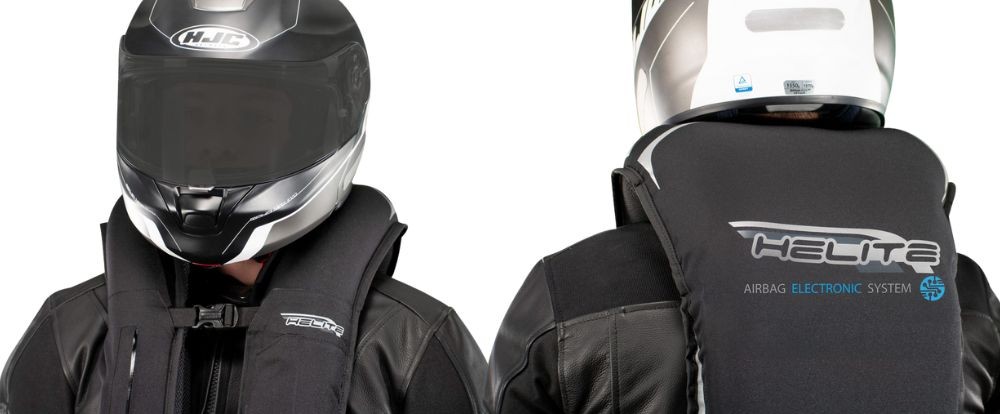
Most other electronic vests out there don’t have this feature, which is a big reason why I stuck with Helite.
Self-Maintenance Matters
Another deal-breaker for me is whether I can service the vest myself. A lot of electronic vests need to be sent back to the manufacturer after they deploy—even if it wasn’t a bad crash. That means downtime and extra cost.
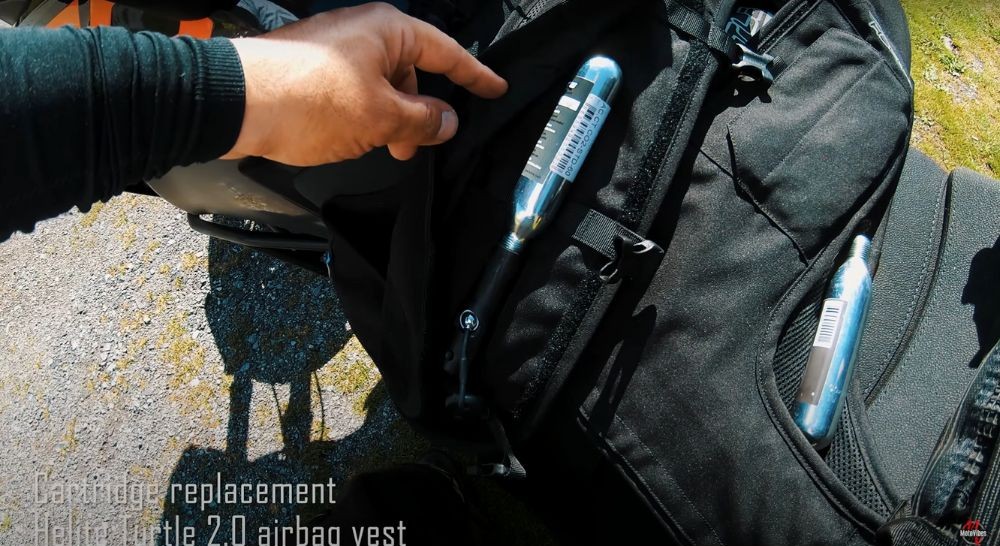
Helite kept the DIY cartridge swap feature in the E-Turtle. After my last crash, I changed the cartridge myself in under 10 minutes, just using my phone and the manual. Now that I know how it works, I could probably do it in less than two.
Ventilation and Comfort on the Road
Another feature I love is the buckle design on the front. Some vests completely cover your jacket’s zipper, blocking airflow. My jacket has two front vents along the zipper, and with the E-Turtle’s open front, air still flows through freely.
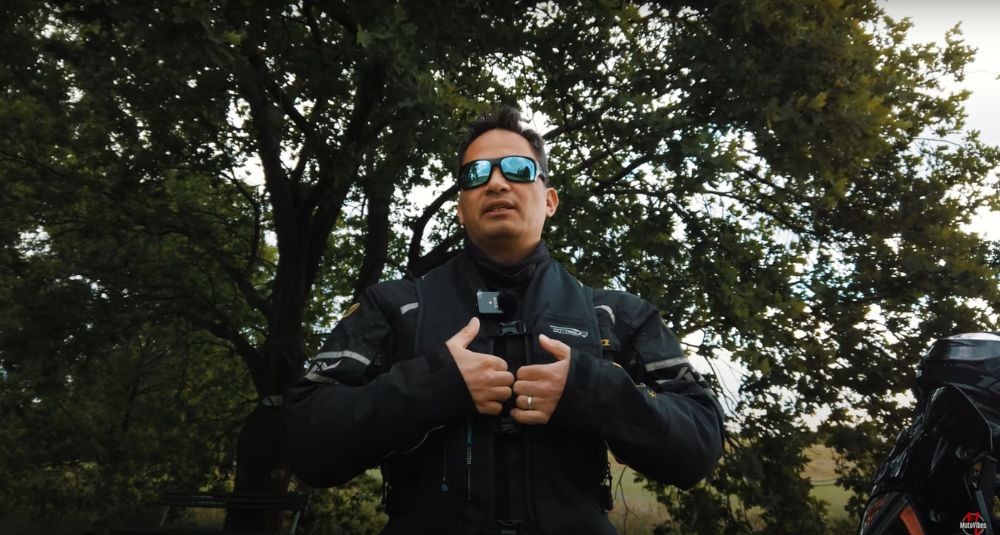
And since I mostly ride in the summer, ventilation is super important. I’ve worn the mechanical Turtle 2.0 in 35°C weather, fully geared up, and still felt comfortable. That’s something I really value.
Taking the E-Turtle Out on the Road
I took the E-Turtle out for its first ride today. The design is familiar, though it does feel a bit heavier now with the electronics packed in. I’d estimate it’s still under 2 kilograms, which makes it light enough that I barely notice it while riding.
Why I Upgraded
So, why did I switch from the mechanical to the electronic version?
First, the tether. It’s not a huge issue if you’re always sitting, but I do a lot of standing on the pegs. To accommodate that, you’d need a long tether, which also means the vest would deploy later in a crash. Plus, having something always pulling at your vest while you ride? Kinda annoying.
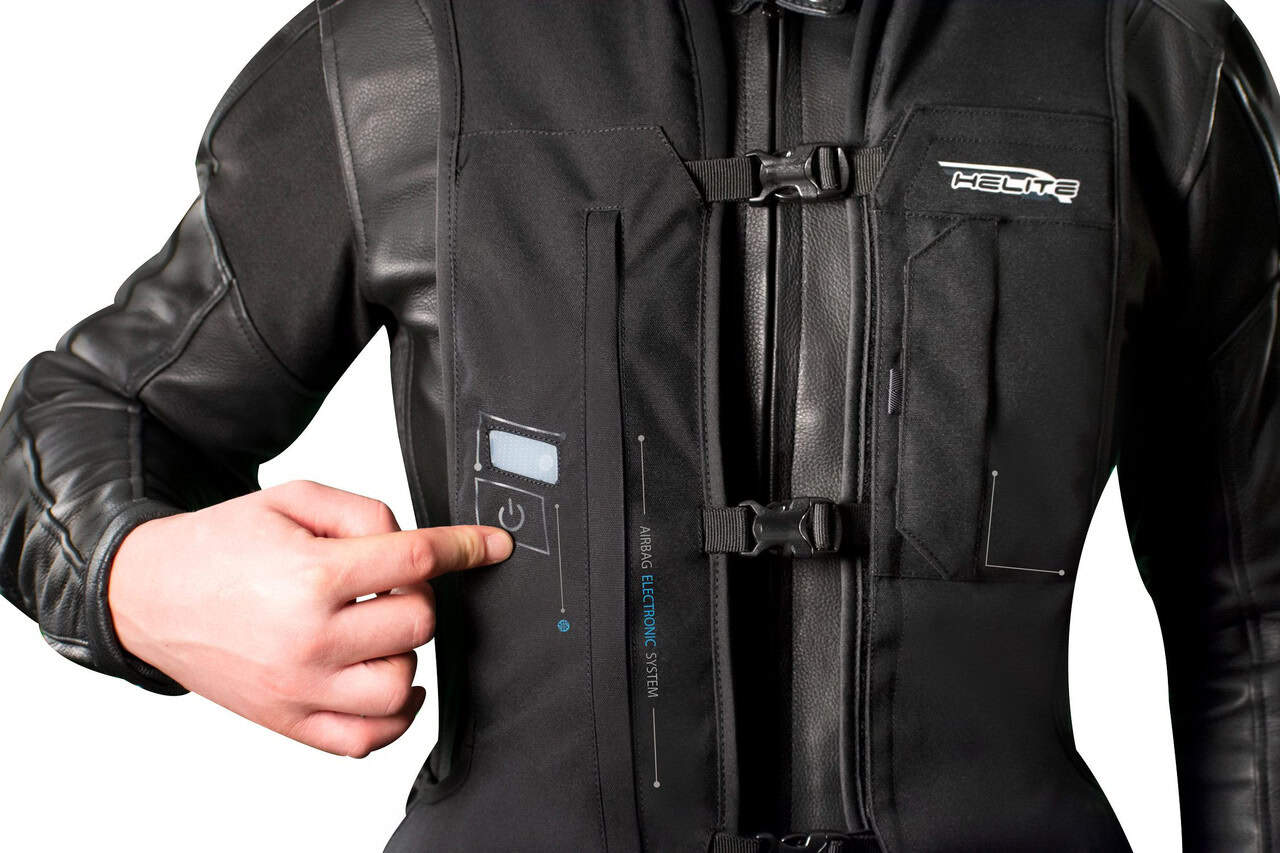
Second, the electronic version is likely to deploy faster. In a low-side, for example, you might still be sliding with the bike, and a mechanical vest won’t trigger until you separate from the bike. That’s what happened to me. With the E-Turtle, it’s supposed to trigger while you’re still sliding, giving you earlier protection.
Built-In Protection, Even Without Deployment
Even if the vest doesn’t deploy—which, of course, no system is perfect—it still comes with a Level 2 back protector built in. That’s a huge plus. It means you’re still getting solid protection even if the electronics fail for whatever reason. Compared to the smaller integrated back pads in other jackets, this is a much better solution.
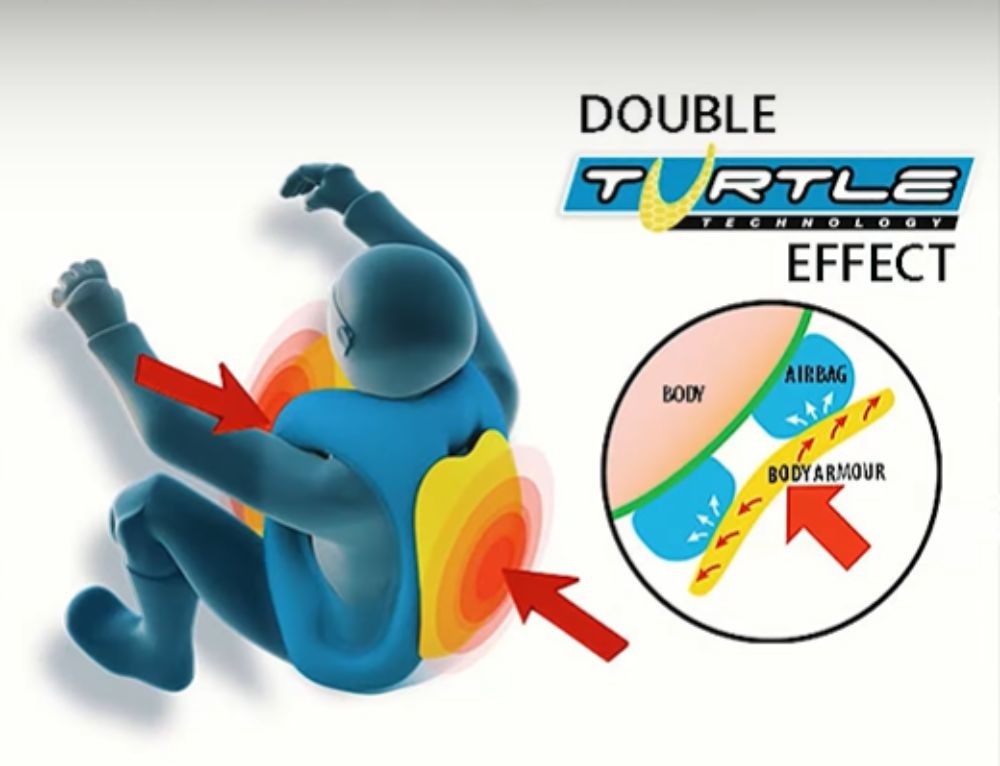
Final Thoughts
All in all, I’m really glad Helite made this move to an electronic version of the Turtle. If you read the description of my older video, this is exactly what I was hoping for—a fully electronic Turtle vest that keeps all the features I love. And they actually delivered.
If you’re in the market for a new airbag vest, the Helite E-Turtle is absolutely worth a look. There are plenty of great products out there, but this one’s the best for me.
Ride safe, and stay awesome!
Wireless airbag vest offering fast 360° detection and 80 ms inflation to protect neck, back, pelvis, and chest—worn over gear for comfort and user-serviceable CO₂ cartridge.
- Fits comfortably over any motorcycle jacket
- Rapid inflation covers vital organs & neck
- CO₂ cartridge is user-replaceable
- Good ventilation even in warm weather
- Not EN1621‑4 certified—mid-tier protection
- Over‑jacket fit may look bulky for some users
Related
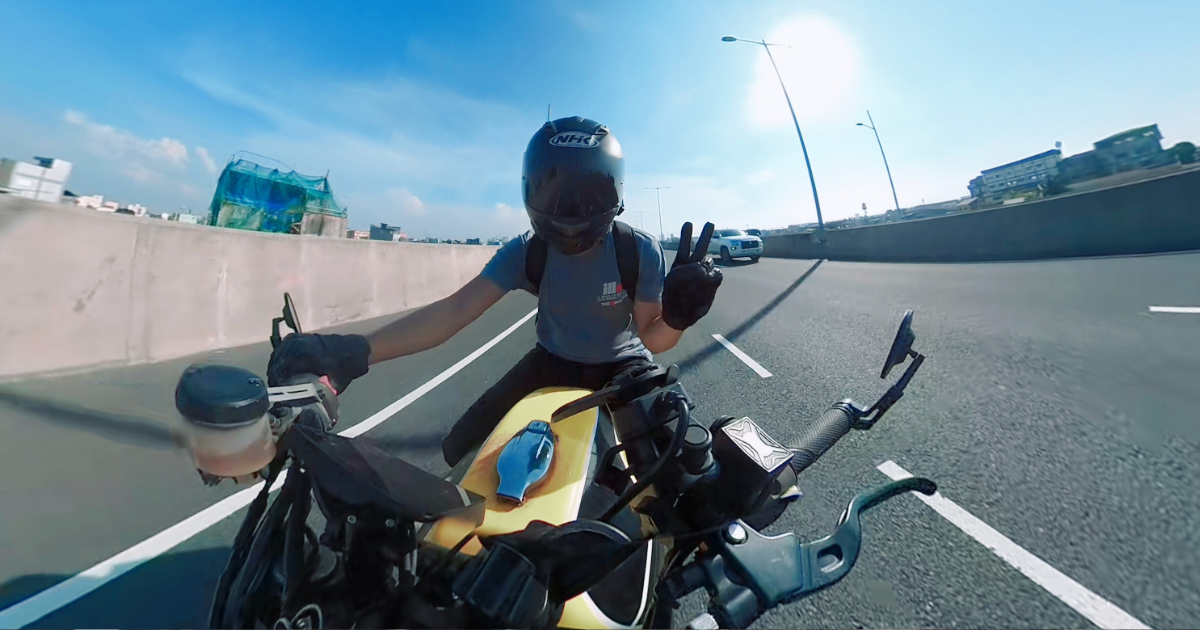
Pando Moto Onyx 02 Gloves Review: The Break-In That Changed Me
Too tight at first, perfectly molded after break-in. Quality leather gloves worth the patience for classic motorcycle riders.

